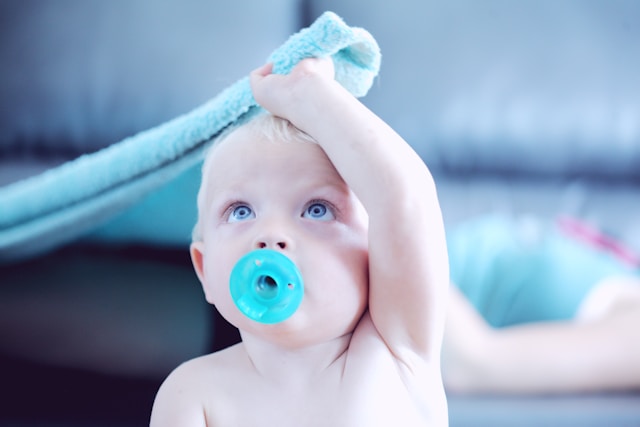- Change theme
What to Keep in Mind When Choosing Eco-Friendly Baby Clothing for Your Little One

Choosing clothing for your baby is both an exciting and daunting task.
21:28 24 October 2024
Choosing clothing for your baby is both an exciting and daunting task. As parents, we want to ensure our little ones are comfortable, safe, and stylish. But with growing concerns about environmental impact, many parents are also looking for eco-friendly options. So, what should you keep in mind when choosing eco-friendly baby clothing? Let’s find out!
Material Matters
One of the first things to consider is the fabric used in the baby clothes. Traditional cotton farming can be resource-intensive and often involves harmful pesticides. Look for organic cotton, which is grown without synthetic fertilizers or pesticides, making it safer for your baby and the environment. Other great options include:
Bamboo: Naturally hypoallergenic, soft, and breathable, bamboo fabric is a fantastic choice.
Hemp: This material is durable, breathable, and requires little water to grow, making it an eco-friendly choice.
Linen: Made from flax, linen is biodegradable and requires fewer resources than many other fabrics.
Certifications to Look For
When shopping for eco-friendly baby clothes, it’s helpful to look for certifications that indicate sustainable practices. Here are some key certifications to keep an eye out for:
GOTS (Global Organic Textile Standard): This certification ensures that the entire textile process—from growing the fiber to processing and manufacturing—is organic and environmentally friendly.
OEKO-TEX Standard 100: This label signifies that the textile is free from harmful substances and safe for baby skin.
Fair Trade: This certification indicates that the workers involved in producing the clothing were paid fairly and worked in safe conditions.
Production Practices
Beyond just materials, consider how the clothing is produced. Brands that prioritize ethical manufacturing processes tend to have a lower environmental impact. Look for companies that:
Use sustainable practices in their supply chain.
Support local artisans and communities.
Reduce waste by recycling materials or implementing take-back programs for used clothing.
Durability and Quality
Eco-friendly clothing should not only be good for the planet but also built to last. Babies grow quickly, so investing in high-quality, durable pieces means they can be passed down or reused. Look for well-stitched seams, reinforced areas (like knees in pants), and fade-resistant colors. The more durable the clothing, the less often you’ll need to replace it, which is better for your wallet and the environment.
Comfort and Safety
Comfort is paramount for baby girl clothing. Make sure the baby girl clothes are soft, breathable, and free from harmful chemicals. Avoid items with rough seams or tags that could irritate your baby's sensitive skin. Look for features like:
Adjustable waistbands: These can help ensure a good fit as your baby grows.
Elastic cuffs and hems: They can make changing diapers easier while keeping clothes snug and comfortable.
Size and Fit
Babies grow fast! When shopping for baby girl clothes, consider buying slightly larger sizes that can be worn longer. Many eco-friendly brands offer styles that are designed to fit multiple sizes, extending the life of each piece. Also, think about clothing that can be layered, which allows for versatility as your baby grows.
Brand Philosophy
Take a moment to research the brands you’re considering. Many eco-friendly brands have missions that align with sustainability, ethics, and transparency. Some even donate a portion of their profits to environmental causes or child welfare organizations. Supporting companies that share your values can feel good and contribute positively to the world.
Secondhand Options
Don’t overlook the power of secondhand shopping! Thrift stores, consignment shops, and online marketplaces are excellent places to find gently used eco-friendly baby clothing. This not only saves you money but also reduces waste, as you’re giving new life to pre-loved items.
DIY and Upcycling
If you’re crafty, consider making your own baby clothes or upcycling older garments. This allows you to control the materials and methods used, and it can be a fun way to express your creativity. Plus, you can ensure everything is baby-safe.
The Bigger Picture
Finally, remember that eco-friendly choices extend beyond just clothing. Consider the entire lifestyle you want to create for your family. Use biodegradable diapers, non-toxic baby care products, and sustainable toys. Each small decision contributes to a healthier planet for your little one’s future.
Conclusion
Choosing eco-friendly baby clothing involves more than just picking a cute outfit; it’s about making thoughtful decisions that benefit your child, your community, and the planet. By considering materials, certifications, production practices, and durability, you can feel confident that you’re making the best choices for your little one and the environment. Happy shopping!
